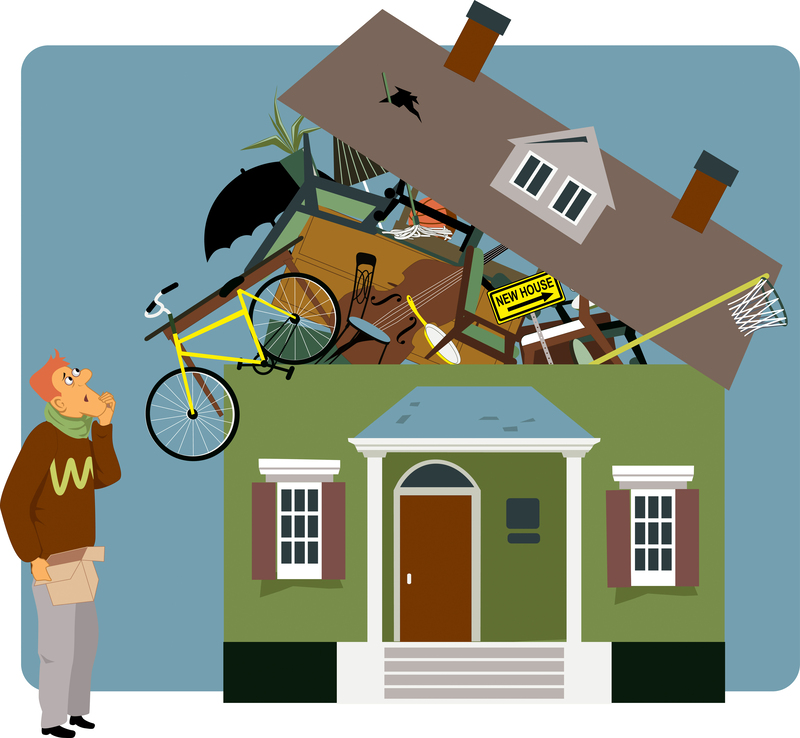Safekeeping Your Freezer When It's Not Active
Posted on 20/06/2025
Safekeeping Your Freezer When It's Not Active: Essential Tips and Best Practices
Homeowners and business owners alike view the freezer as an indispensable home appliance for food storage and preservation. But there may come times--whether during a relocation, extended travel, or seasonal changes--when your freezer will remain unused for weeks or even months. Safekeeping your freezer when it's not active is critical not just for prolonging its lifespan but also for ensuring the health and safety of your stored items once it's turned back on.
This comprehensive guide offers both residential and commercial users practical advice on how to care for your freezer while it's inactive. Learn why proper preparation matters, step-by-step instructions to safeguard the appliance, and the potential risks of neglecting your freezer while it's dormant.
Why Safekeeping Your Freezer Matters When It's Not in Use
- Prevents mold and mildew growth
- Avoids foul odors and pest invasions
- Extends the lifespan of your freezer
- Saves money on repairs and replacements
Many people make the mistake of unplugging their freezer and simply leaving it. However, an unused, unprepared freezer can quickly become a breeding ground for bacteria, pest infestations, and offensive smells. Taking a few extra steps before leaving your freezer inactive can shield both your appliance and your household from headaches down the road.

Step-by-Step Process: Proper Freezer Care During Periods of Inactivity
1. Empty Your Freezer Completely
The first and most crucial step in preserving your freezer when not in use is to remove everything inside. Items left in the freezer during inactivity can spoil, leak, or cause persistent odors. Here's how to do it:
- Transfer perishable goods to a working refrigerator or another freezer.
- Dispose of expired or questionable items to avoid contamination or pests.
- Check corners and drawers for forgotten packages or spills.
2. Defrost Your Freezer Thoroughly
Once emptied, unplug your freezer to let it defrost. This prevents water from freezing up and causing mechanical issues later on. Here's how to defrost effectively:
- Unplug the freezer and leave the door open.
- Place towels around the base to absorb melting water.
- Scrape away residual ice build-up--never use sharp tools that can damage the lining.
- Wipe all surfaces, corners, and seals to remove any standing water or ice residue.
3. Clean and Deodorize the Freezer Interior
Proper freezer safekeeping calls for a deep cleaning after defrosting. Funky smells or bacteria can develop in the smallest crevices if not addressed. Follow these tips:
- Use a mixture of baking soda and warm water for wiping down all shelves, drawers, and surfaces.
- Pay close attention to seals and corners where grime accumulates.
- Let surfaces air dry or towel dry completely to avoid moisture build-up.
- For extra odor protection, place an open box of baking soda or activated charcoal inside.
4. Securely Prop Open the Door
One of the most overlooked steps in long-term freezer storage when not in use is keeping the door ajar:
- Use a folded towel, spacer, or special freezer prop to allow airflow inside.
- Prevents the development of musty odors and mold.
- Verify door is safely propped open to keep children and pets from getting trapped.
5. Store in a Suitable Environment
Plan where your freezer will reside during inactivity. Environmental factors can affect its durability:
- Keep away from direct sunlight to prevent exterior and internal component damage.
- Avoid damp or humid areas like garages or basements prone to moisture, unless the freezer is garage-rated.
- Place on a level surface to safeguard internal mechanisms and doors from warping.
6. Protect the Exterior
Safeguarding a dormant freezer's exterior also prevents rust and dust accumulation:
- Wipe down the entire exterior with a mild detergent.
- Wax metal or stainless steel finishes with appliance-safe polish for added protection.
- Cover the unit lightly with a breathable sheet--never use plastic, as it can trap humidity.
7. Unplug and Disconnect Utilities
Unplugging your freezer is an obvious but essential freezer storage safety measure:
- Unplug from the socket and safely coil the cord.
- If your model has a water line (for ice makers), turn off and disconnect water supply to prevent leaks or damage while out of commission.
- Never leave the unit plugged in unattended for long periods; unexpected power surges can occur.
Potential Risks of Neglecting Inactive Freezers
1. Mold and Mildew Outbreak
If moisture gets trapped and your freezer remains sealed, conditions quickly become optimal for mold and mildew to form. This can result in stubborn smells, unsightly residue, and even health concerns for sensitive individuals.
2. Pest Infestations
Leftover bits of food or sticky residues can attract ants, cockroaches, or even rodents. Ensuring a completely clean and dry freezer interior is key to pest prevention.
3. Costly Repairs and Shortened Appliance Lifespan
Prolonged exposure to moisture and temperature fluctuations can damage internal parts, seals, or the compressor. Proper safekeeping of your freezer when it's not active avoids these expensive repairs and breakdowns.
4. Unpleasant Odors
Even after a short period, closed, inactive freezers with moisture or food residue may develop persistent bad smells that can be challenging to eliminate later.
Additional Freezer Storage Tips for Extended Periods of Inactivity
Monitor and Perform Periodic Checks
- Regularly inspect the freezer for signs of moisture, mold, or pests even while it's unused.
- Refresh baking soda or charcoal deodorizer every few months.
- Check that the door stays properly propped and hasn't been closed accidentally.
Ensure Safety for Households with Children and Pets
- Place the freezer in a location out of reach of young children.
- If storing upright, ensure it is stable and won't tip over.
- Consider locking the freezer or securing the lid if necessary for safety.
Consider Moving and Storage Conditions
If you plan to store your freezer in a storage unit, or temporarily outdoors, take additional precautions:
- Keep off bare ground--place on a pallet to elevate and avoid contact with water or changing temperatures.
- Choose climate-controlled units in areas with extreme weather.
- Label and cover for identification and added protection during transit.
Steps for Reactivating an Idle Freezer
Proper freezer maintenance during downtime makes reactivation simple and safe. When you're ready to put your freezer back into service, follow these steps:
- Give the freezer a final wipe-down inside and out before plugging in.
- Inspect for pests, mold, or moisture residue especially around seals and hinges.
- Reconnect to power and, if needed, to water supply for ice makers.
- Allow the unit to reach target temperature (usually a few hours) before restocking with food.
- Restock only with fresh, safe, and properly packaged foods.

Frequently Asked Questions About Storing a Freezer When Not In Use
Should I keep my freezer plugged in if I'm not using it?
No. If the freezer will be unused for more than a few days, unplug it, empty it, and follow the preparation steps above. This reduces energy use and prevents possible malfunctions from power fluctuations.
Is it safe to store a freezer in a garage or basement?
Only if the space is dry, well-ventilated, and above freezing temperatures. Excess humidity and temperature swings can harm the appliance when it's not running. If you must use such spaces, elevate the freezer and add a moisture absorber nearby.
Can I cover my freezer with a tarp or plastic sheet?
Do not use non-breathable covers. Plastic tarps can trap moisture and encourage rust or mildew. Instead, use a cotton sheet or an appliance cover designed for airflow and dust protection.
Do I need to clean my freezer after each period of inactivity?
Yes. Cleaning your dormant freezer before and after each period of inactivity is the best way to prevent odor, pest, and mold problems.
How can I prevent freezer doors from accidentally closing when not in use?
Use commercially available door props, or a rolled-up towel/rubber wedge, and regularly check to ensure continued airflow.
Conclusion: Keep Your Freezer Safe and Ready for the Future
Safekeeping your freezer when it's not active is an easy way to preserve both your investment and peace of mind. By adopting a thorough cleaning, drying, and preparation regimen, you ensure your appliance functions flawlessly once it's time to use it again. Don't cut corners: a few quick steps protect against costly damage, health concerns, and household hassle.
Are you preparing to store your freezer for a long trip or between seasons? Follow this guide, and your freezer will thank you--with safe, fresh food storage for years to come!









